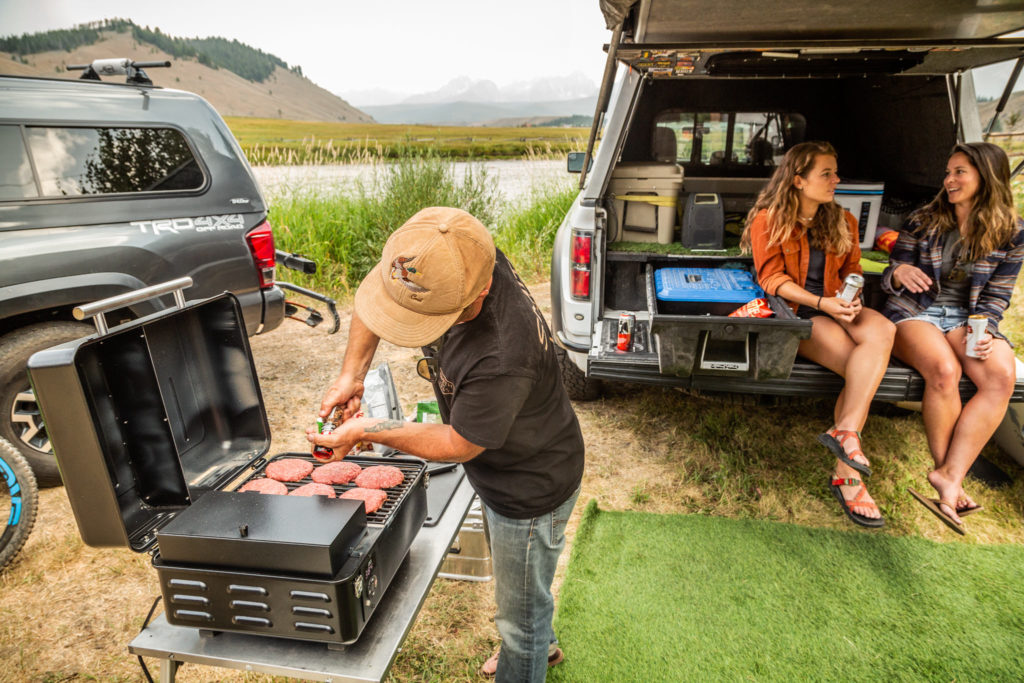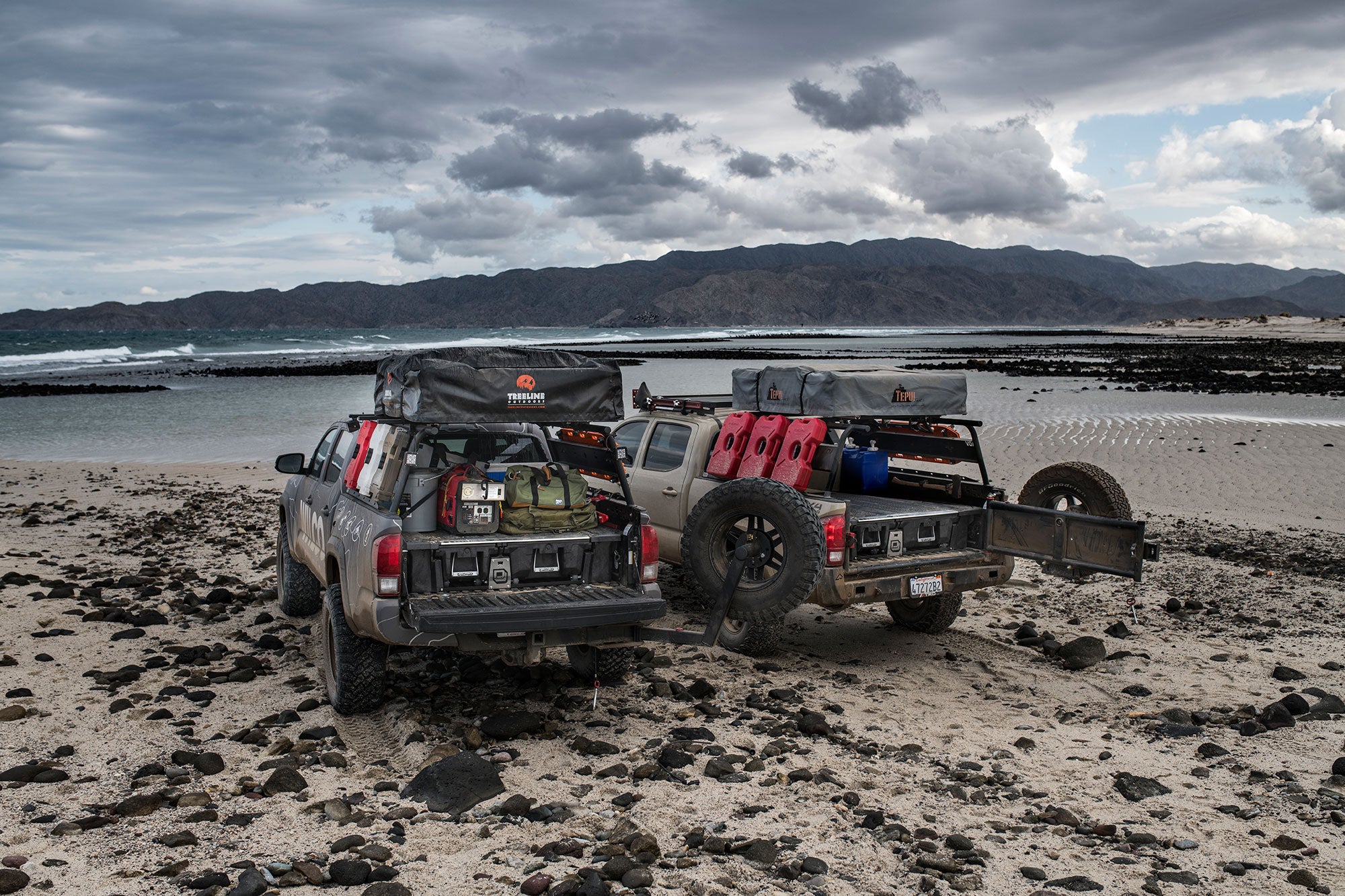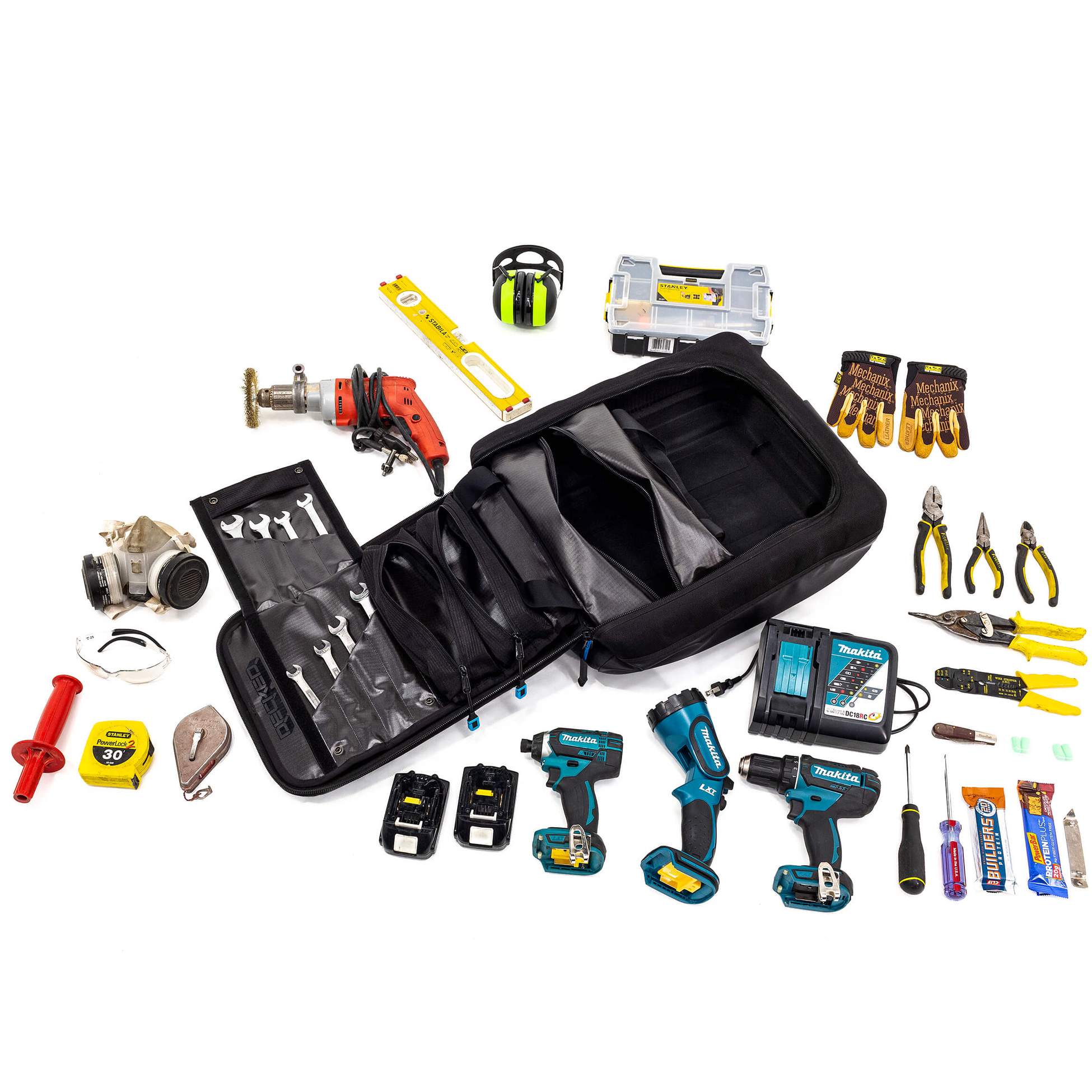WTH is Dispersed Camping Anyway?
Here’s a question for you: How outdoorsy are you? Better yet, how outdoorsy do you want to get?
If you’re looking for your next big adventure, dispersed camping might be for you.
As the name implies, dispersed camping isn’t like regular camping. When you camp dispersed, you’re camping anywhere in the (federally owned) wilds of the US of A.
This means no campsite, no facilities, no cell service. Just you and the great outdoors (plus a few regulations you need to follow). Oh, and it’s as free as America.
If you’re into backpacking or want to try your hand at a camping experience like no other, here’s what you need to know:
- You can pitch your tent in just about any National Forest or public land under the Bureau of Land Management or Wildlife Management Area (withstanding weather and other restrictions, like shooting).
- When camping on public land, you may stay in one area for up to 16 days. After 16 days, you gotta pack your sh*t and move at least 5 road miles.
- Groups of 75+ people need a special use permit. Reach out to the nearest District Office to apply for a free permit.
- You have to set up camp 100 ft away from any water source. This ensures you won’t contaminate the water while relieving yourself and keep the fish biting while you’re catching lunch.
- Here’s the rule of the jungle (forest, woods, whatever): Stay self-contained. You won’t have access to any of the amenities you’d get while RVing.
- This means you gotta follow the Leave No Trace guidelines!
- Lastly, before heading out, it’s a good idea to contact the local Forest Service office for any additional restrictions, especially for fires and/or bear and mountain lion sightings.
Where Can I Disperse Camp?

You’ve heard the call of the wild—it’s time for a road trip! But where? Well, you can’t just pitch your tent and camp anywhere you want.
Before rushing out the door, check out any one of these links on free-to-use camping locations.
- National Forest Land allows free camping but National Parks are restricted. Check out the Forest Service’s interactive map for suitable locations.
- The Bureau of Land Management also offers (static) maps listing designated campgrounds and other recreational activities. Almost all BLM land is free to camp on.
- Check out Free Campsites to find the perfect spot for you and read up on recommendations for good camping spots.
- Alternatively, the Campendium offers recommendations not only for dispersed campsites but RV parks, state parks, and national parks.
Tips for the Dispersed Camper
The idea of loading up your truck, kissing your wife goodbye, and braving the backcountry sounds so cool—and it is, but it doesn’t hurt to prepare first.
After all, you don’t want to end up in bear territory without knowing how to protect yourself, right? Right.
Here are some tips to follow before hitting those dirt roads:
Pack responsibly
Out in the woods, you won’t have access to anything but what you carry, so pack with efficiency in mind. To start, you’ll need a first aid kit, extra batteries, a portable light source, and weatherproof apparel.
Using DECKED’s modular drawer system, you’ll be able to stock up on necessities until it’s time to go on foot. Then, when you set out, you can simply take a D-Bag packed with hiking essentials with you. Lastly, you can rest easy knowing non-essentials and any extra food is safely locked up from critters.
Avoid going alone
Unless you’re the next Bear Grylls, solo camping is best left to the veterans. For your first trip, consider truck camping with a buddy or significant other. With DECKED’s unique modular organization for trucks and other vehicles, you’ll have plenty of room to sleep under the stars, pack enough for two, and load up in a hurry if one of you gets injured.
It’s also a good idea to let someone know where you’ll be and when you’ll be back. Leave your plan with a friend or visit the nearby ranger station to let them know what’s up. It’s unlikely you’ll get in trouble, but we all know at least one person who’s been eaten by a bear.
Prepare for no cell service
You won’t realize how big the great outdoors is ‘til you’ve lost all cell service. Before you head out, make sure to use Google Maps or another website to scout out dispersed camping areas, check up on local flood and mudslides warnings, or closed access roads. Lastly, don’t forget to take a paper map or trail with you.
Though, if you find yourself in a Blair Witch situation, you’re on your own.
Prepare to be self-contained
Say goodbye to the civility of picnic tables. Out in the wild, you need to stay self-contained and make do without amenities. Keep daily inventory of your items and don’t be afraid to cut a trip short if you’ve run out of a major necessity.
Review U.S. Forest Service’s guidelines to learn more and invest in DECKED drawers to manage supplies, keep track of usage, and protect natural resources from human waste.
And don’t forget toilet paper.
Go biodegradable
Pre-plan your waste down to the last chocolate wrapper. Focus on biodegradable alternatives for necessities like food and washing up, and carry extra trash bags for non-biodegradable waste. Dump greywater away from any water sources.
It’s the great outdoors after all—let’s keep it that way!
Treat all your drinking water
If Survivorman has taught us anything, the last thing any of us should be doing is drinking from a trickling stream or babbling brook. It’s a good way to catch giardia aka beaver fever, and a host of other waterborne parasites that can land you in the hospital.
Pack several gallons of water (at least 1 gallon per person a day), or purchase purification tablets, filtration pumps, and filters.
(This won’t be a lot of fun to transport, so mount up for your camping trip with any one of DECKED’s detachable, portable, waterproof storage options.)
Build fires responsibly
Whether you’re car camping or planning a rustic family trip, you’re gonna need to stay warm. Before purchasing any items, be sure to check up on fire restrictions. Then, invest in a portable fire ring or fire pit for all your cooking, grilling, frying, and ghost-story needs.
Outside of developed campgrounds, you’re also going to need to pre-purchase firewood and kindling (or go full caveman and scavenge for dead or downed wood). Cutting or damaging any timber is strictly prohibited under National Park guidelines.
Travel and camp on stable surfaces
Aim for a flat, spacious area with not much foliage and a clear line of sight. Your campsite must be at least 100 ft away from the base of any cliff or rock shelter. This also goes for the lake- or riverside camping. Not only will you avoid water contamination, but the animals who frequent the local watering hole.
Be sure to pick a site early in the day or risk getting turned around in the dark. If you haven’t made camp by sundown, you can get cozy in your truck with DECKED’s truck bed setup. Good for a pinch, great for long-term camping expeditions.
The DECKED camping setup is a favorite amongst the most experienced of campers because it actually:
- Creates a wider flare surface to sleep on while…
- Organizing all your gear UNDER this flat surface so you’re not sleeping in your closet.
Beware of bears (Or get good at wrestling them and winning…)
Beware lions, tigers, and bears, oh my!—or, well, bears and mountain lions. This isn’t Tiger King.
Both brown bears and mountain lions are primarily found in the west and northwest states. Stay aware of your surroundings, travel in groups, and stand your ground if you happen to encounter one of them.
If you’re going hunting, invest in bear canisters, and keep your gear secure with our foolproof, weatherproof, and animal-proof storage ideas for the off- and on-season.
Respect all wildlife
We like to think of ourselves as kings of the jungle (re: forest), but we’re not. As residents of this big blue marble, we have to respect wildlife, big and small.
Review local guidelines on endangered animals and plants. Avoid bringing in firewood or deadwood from other areas that may contain invasive insects. If you’ve brought along your furry best friend, keep it from wandering away from camp and restrain your dog if a ranger asks you to.
Leave no trace and dispose of waste properly
Live by the Leave No Trace principle: Pack in, pack out. Get comfy with using poop bags and/or learn how to dig a cathole 200 ft away from any water source. Respect local and historical structures and artifacts. Do not try to pet Bambi.
A good rule of thumb is to leave every campsite in better condition than you found it. Limit waste with DECKED’s secure and versatile storage items, such as our detachable Crossbox and D-Box for easy transport to and from your truck.
Dispersed Camping with DECKED

Whether you’re planning an overland adventure or have your eye set on truck camping, DECKED takes dispersed camping to the next level. Keep your gear contained and get rugged with any one of our easy-to-use, easy-to-install truck builds.
With a limited lifetime warranty and numerous customization options, you’ll get the best bang out of your buck and brave the outdoors with dispersed camping.
Trust us—it beats glamping any day.





